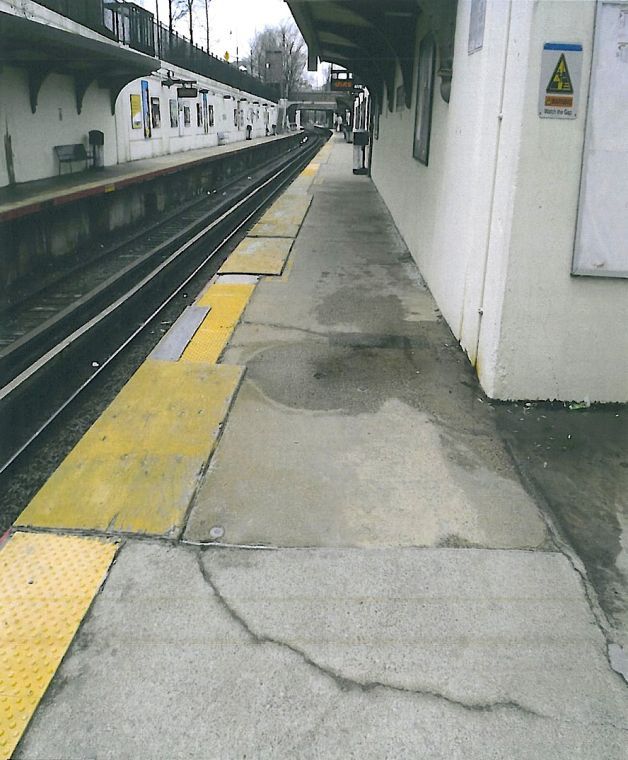
Part of the westbound platform of the Great Neck LIRR station and the Barstow Road staircase have been closed to make room for structural repairs, Long Island Rail Road officials said Tuesday.
“The westbound platform has been in a state of disrepair for a while,” said Paul Jones, project manager for the Great Neck LIRR station.
Jones said the repairs, which started about three weeks ago, are necessary because the station’s westbound platform has decreased in elevation in recent years, due to heavy rain and snowfall.
“Like any concrete surface, it’s going to show wear and tear,” Jones said.
The dip in elevation has made it harder for commuters to board the train as it pulls up to the platform, Jones said.
Rail road crews began repairs on the westbound platform last summer, Jones said, and were able to fix more than 400 feet of the eastern end of the westbound platform in six months.
The second phase, which is scheduled to end in late September or early October, will repair an additional 165 feet on the west end of the platform, starting from the Barstow Road staircase and stretching to the end of the platform, Jones said.
Jones said the difference between the dilapidated part of the platform and part that has been repaired is “very noticeable.”
During the time of construction, commuters will be unable to use the staircase at Barstow Road. LIRR officials have placed a temporary staircase at South Middle Neck Road, allowing commuters to walk down to the westbound platform.
Jones said he does not believe that commuters’ trips will be heavily affected by the closing of the Barstow Road staircase.
“Our customers are pretty resilient,” he said. “If they realize work needs to be done they realize there will be a short-term pain for a long-term gain.”
Jones said that the Great Neck station has been a “consistent trouble ticket.”
“We were constantly doing minor repairs at the Great Neck station,” he said.
Jones also said that workers will do “minor repairs” on the eastbound platform.
Workers at the station will break about four inches off of the top of the platform and then begin to rebuild it with support beams and concrete, he said.
The work on the platform will be done during the daytime, Jones said, and is not expected to cause any delays to the train’s scheduled arrival and departure times.
Jones said the structural problems with the platform were discovered during the MTA’s annual assessment of its LIRR stations.
“What we do is we look at individual components of the station,” he said. “When we were done, Great Neck came out on top with the most amount of problems.”
Jones said that LIRR workers placed a “levelling course” on the platform about 10 years ago, which has since become defective.






